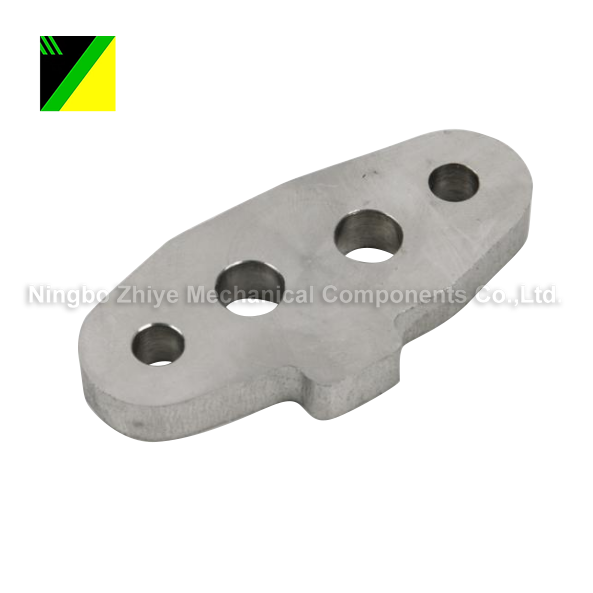Practice of digital twin technology in stainless steel casting quality control
2025-09-28
Table of Contents
-
Introduction: The Digital Revolution in Metallurgy
-
How Digital Twin Technology Transforms Stainless Steel Casting Quality Control
-
Core Product Parameters and Specifications
-
The Tangible Benefits: From Data to Superior Castings
-
Frequently Asked Questions (FAQ)
1. Introduction: The Digital Revolution in Metallurgy
The stainless steel casting industry stands at the brink of a profound transformation. For decades, quality control has relied heavily on reactive measures—inspecting finished components for defects, leading to costly rework, scrap, and unpredictable delays. Today, a proactive paradigm is emerging, powered by Digital Twin technology. This innovation creates a dynamic virtual replica of the entire physical casting process, enabling unprecedented levels of prediction, optimization, and control. This article delves into the practical application of this technology, demonstrating how it is setting a new global standard for quality in every stainless steel casting produced.
2. How Digital Twin Technology Transforms Stainless Steel Casting Quality Control
A Digital Twin is far more than a static 3D model. It is a living, data-driven simulation that mirrors the real-world foundry environment. It integrates physics-based modeling with real-time sensor data to create a closed-loop feedback system for quality assurance.
The process begins with the digital creation of the component and the mold. The Digital Twin then simulates the entire casting process:
-
Molten Metal Flow: It predicts how the molten stainless steel will fill the mold, identifying potential issues like turbulence or cold shuts.
-
Solidification & Cooling: The core of quality control, the simulation accurately forecasts shrinkage porosity, hot tears, and residual stresses by analyzing the cooling rates throughout the stainless steel casting.
-
Microstructure Prediction: The model can predict the final metallic grain structure, which directly correlates to the mechanical properties of the part.
By running "what-if" scenarios in the virtual space, engineers can optimize process parameters before any metal is poured, virtually eliminating the trial-and-error approach.
3. Core Product Parameters and Specifications
Our Digital Twin platform for stainless steel casting quality control is engineered for precision, scalability, and integration. Below are the key technical specifications.
Key Modules & Features:
-
Multi-Physics Simulation Engine: Integrates fluid dynamics, thermodynamics, and stress analysis.
-
Real-Time Data Integration: Connects to plant sensors (temperature, flow) to calibrate the twin continuously.
-
AI-Powered Defect Prediction: Uses machine learning to identify patterns and predict defects with high accuracy.
-
Cloud-Based Dashboard: Provides access to process insights and quality reports from any location.
-
Material Library: Includes an extensive database of stainless steel grades (e.g., 304, 316, CF8M) and their properties.
Technical Specifications Table:
| Parameter Category | Specification Details |
|---|---|
| Supported Casting Processes | Investment Casting, Sand Casting, Lost Foam Casting |
| Simulation Accuracy | >95% for major defect prediction (shrinkage, porosity) |
| Data Input Compatibility | CAD files (STEP, IGES), Sensor data (OPC UA, MQTT), ERP/MES systems |
| Output Deliverables | Porosity & Shrinkage Maps, Solidification Sequence, Temperature Gradients, Stress Distribution |
| Deployment Options | On-Premise Server or Secure Cloud Instance |
4. The Tangible Benefits: From Data to Superior Castings
Implementing our Digital Twin solution yields direct and measurable improvements across the production line. The benefits extend beyond simple quality checks to encompass the entire business operation.
-
Drastic Reduction in Defect Rates: By identifying and mitigating root causes of defects in the virtual stage, scrap and rework rates can be reduced by up to 70%.
-
Shortened Production Cycles: The elimination of physical prototyping and multiple test pours accelerates time-to-market for new components.
-
Enhanced Material Efficiency: Optimal gating and riser design, validated by the twin, minimizes excess metal usage, lowering material costs.
-
Data-Driven Continuous Improvement: Every cast part feeds data back into the system, creating a perpetual cycle of refinement and optimization for future production runs.
-
Guaranteed Consistency: Achieve uniform quality and mechanical properties across every batch, ensuring that every stainless steel casting meets the most stringent customer specifications.
This proactive approach fundamentally shifts the role of quality control from inspection to guaranteed outcome.
5. Frequently Asked Questions (FAQ)
Q1: How does the Digital Twin handle different grades of stainless steel?
Our platform includes a comprehensive material library with thermophysical data for a wide range of stainless steel alloys, including Austenitic (e.g., 304, 316), Martensitic (e.g., 420), and Duplex grades. The simulation engine automatically adjusts parameters like thermal conductivity, specific heat, and solidification behavior to ensure accurate predictions for each specific material.
Q2: Is this technology suitable for small-batch or prototype production, or only for mass production?
While the ROI is significant in high-volume production, the Digital Twin is exceptionally valuable for small-batch and prototype work. It eliminates the cost and time of producing multiple physical prototypes. By getting the process right the first time in the digital realm, foundries can accept complex, low-volume jobs with a much higher degree of confidence and profitability.
Q3: What is the typical implementation timeline, and what kind of internal expertise is required?
A standard implementation project typically takes 8 to 12 weeks from contract to full operational deployment. This includes system integration, data migration, and training. Our platform is designed for usability by process engineers and metallurgists, not just simulation experts. We provide comprehensive training and ongoing support to ensure your team can leverage the system to its full potential independently.
If you are very interested in our company's products or have any questions, please feel free to contact us.



